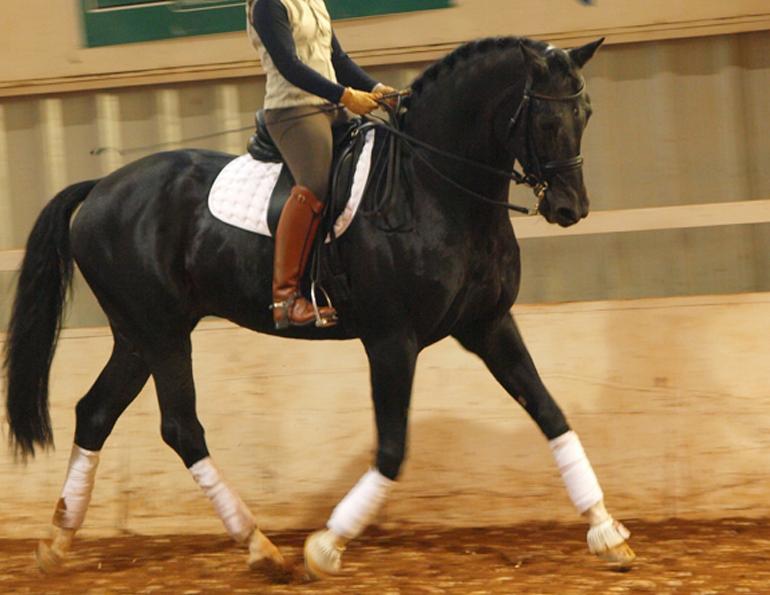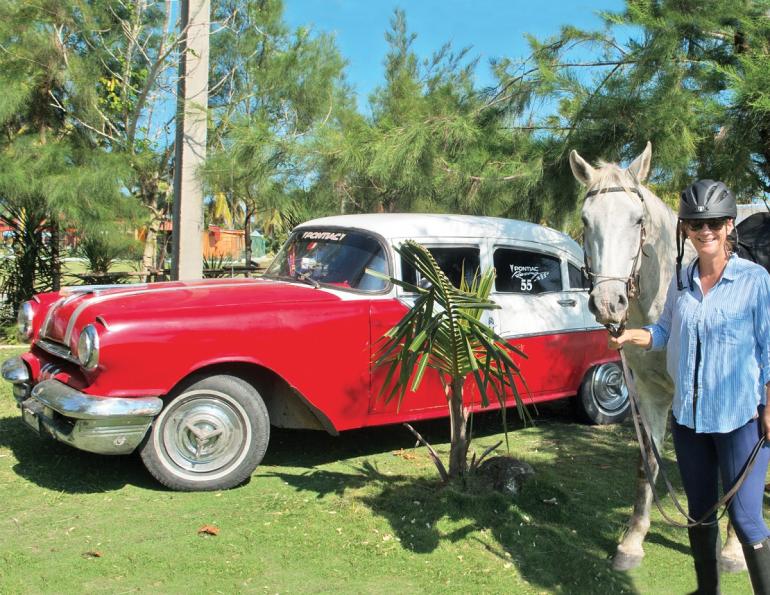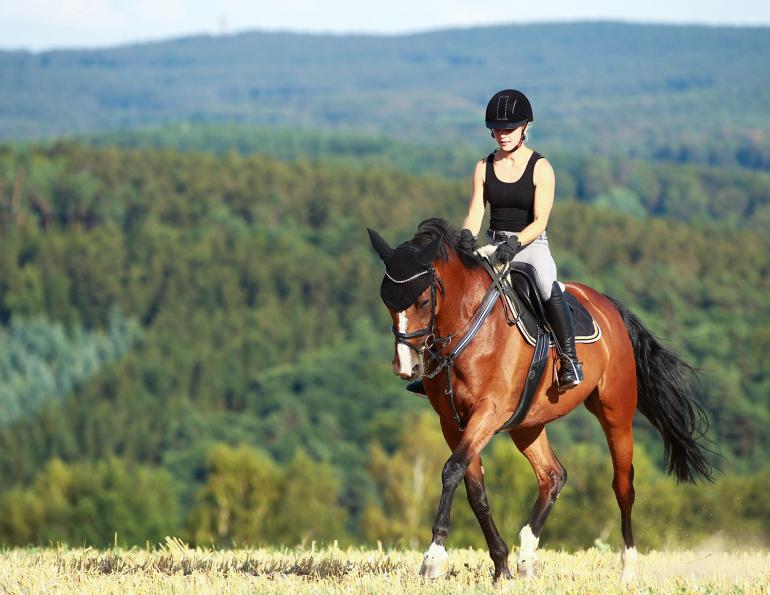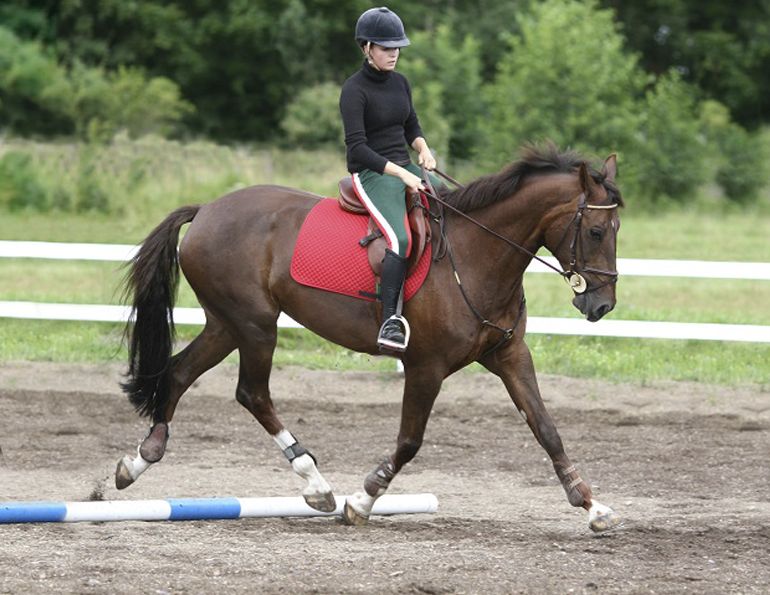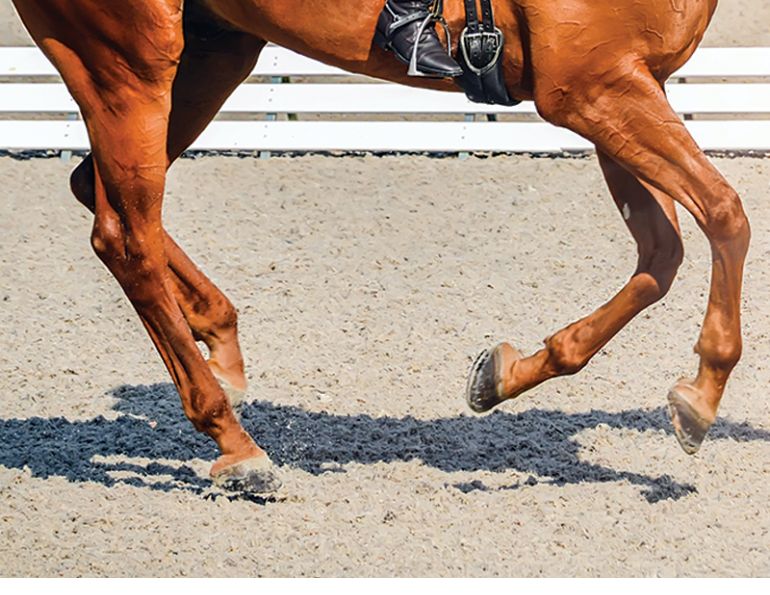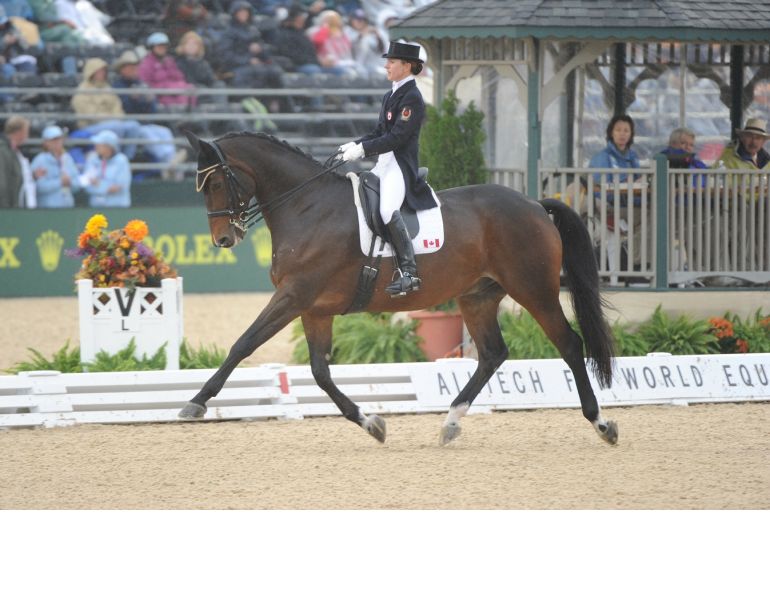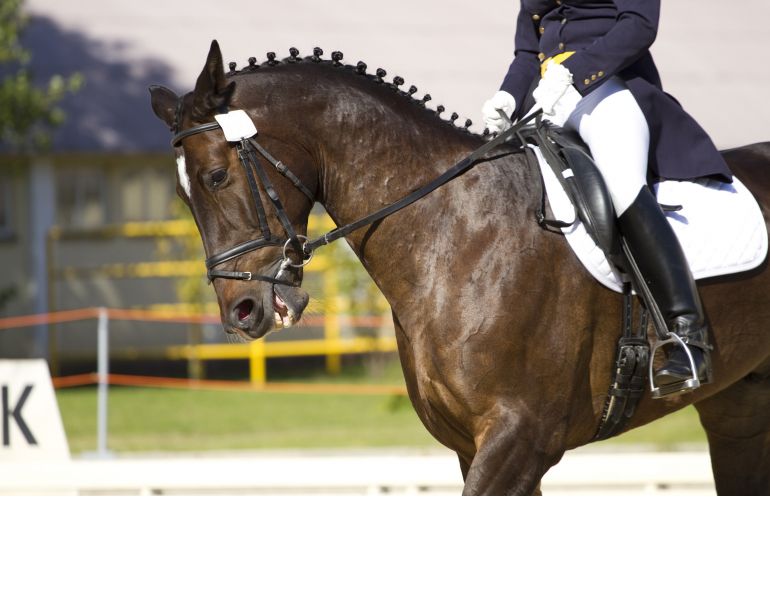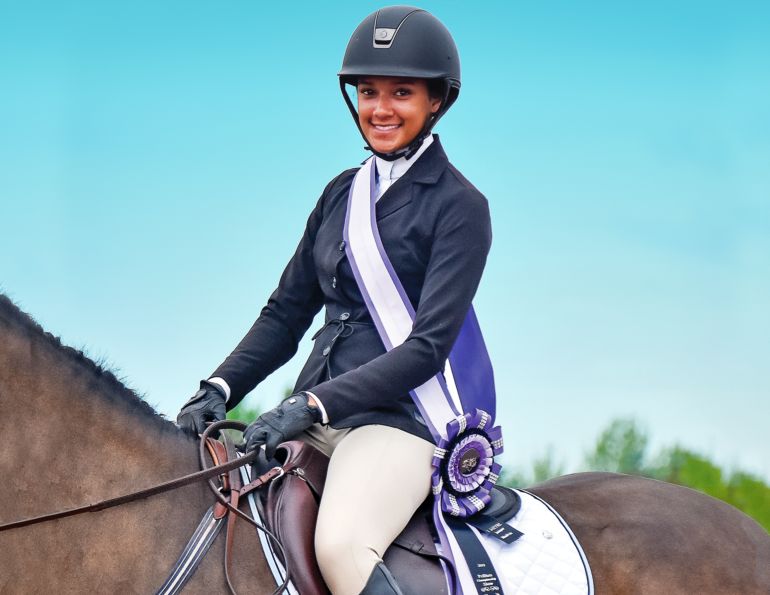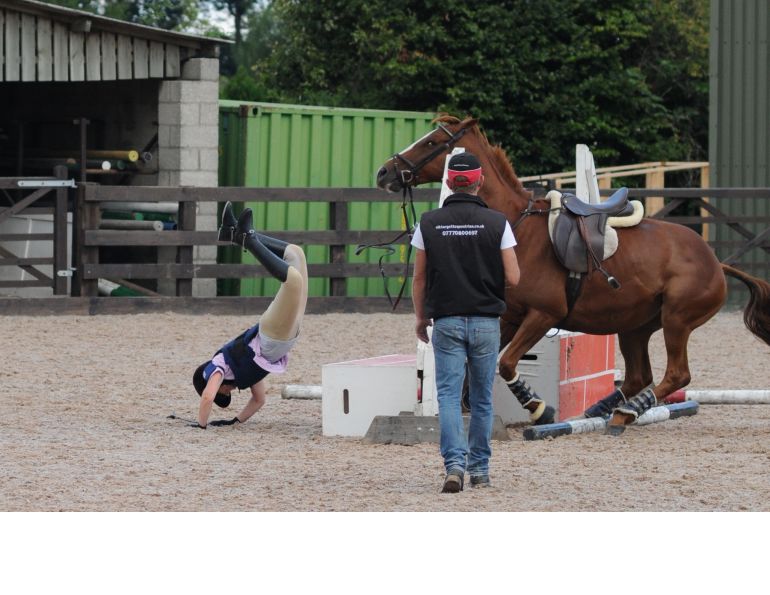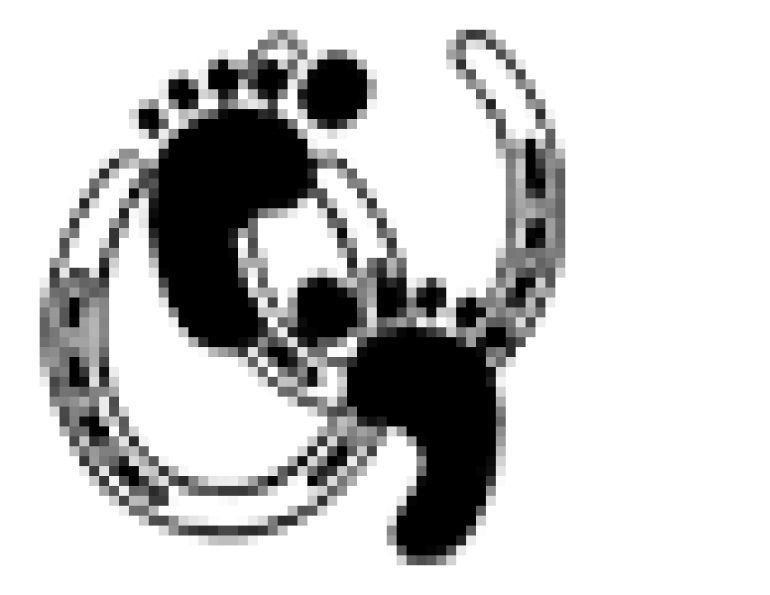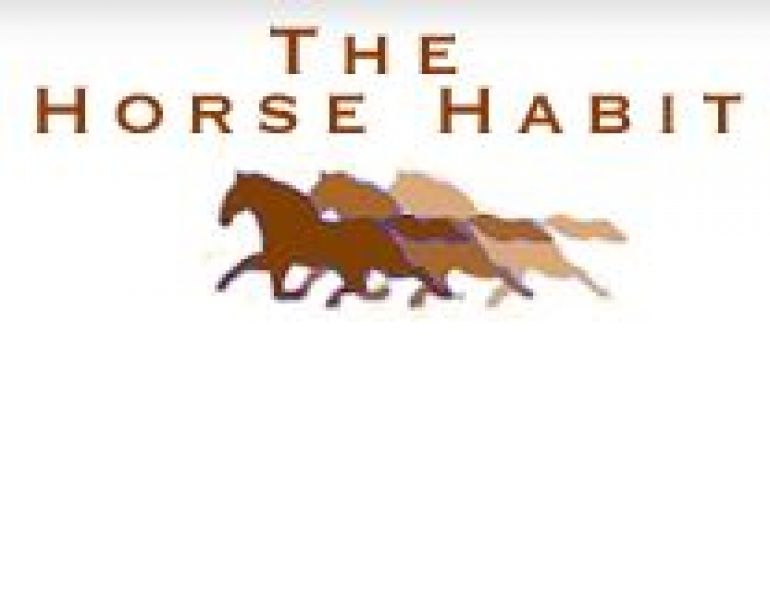With Lee Tubman
By Jess Hallas-Kilcoyne
Rhythm is the foundation of the dressage training scale, the subsequent levels of the scale being suppleness, contact, straightness, impulsion, and collection. Without good rhythm, the other training principles will never be achieved.
One of the major challenges riders face is maintaining an active, working rhythm while remaining in good balance. For Canadian Grand Prix dressage trainer and competitor Lee Tubman, good rhythm and balance begin with good rider position. “The rider needs to have good basic posture and a degree of muscular suppleness that allows correct posture but does not impede or restrict the movement of the horse,” he says. “If this can be done, the focus then shifts to the horse.”
The simplest, most effective exercise to improve the horse's rhythm and balance, and thus improve the gaits themselves, is the half halt. A correctly ridden half halt encourages the hind legs to step further underneath the horse’s body. The horse’s neck and front legs should never be restricted or tight during a half halt, but remain soft and loose.

Ridden correctly, the half halt encourages the horse's hind legs to step further underneath the body. Photo: Pam MacKenzie Photography
“It should be understood that there are varying degrees of the half halt,” explains Tubman. “While in working trot it is possible to give a half halt that brings the horse to a halt, or just to a walk, or nearly to a walk… by alternating from trot to one of these other transitions and then back to trot, you will create a longitudinal suppling effect.”
Half Halt at the Trot
Begin with trot/walk/trot transitions, then trot/nearly walk/trot, and finally trot/halt/trot. Ride the half halt with your seat and legs and a supportive hand, maintaining acceptance of the bit at all times.
Once you have mastered these transitions, you can move on to varying the trot steps. “Increasing the impulsion in the trot and riding more forward into lengthened trot, or medium trot, or extended trot, and then returning to the original trot through half halts gives even more of a suppling effect,” says Tubman.
“The key is short duration to start. Ride forward for five to ten metres and return to your original trot, then repeat. Eventually five to ten metres evolves into ten to twenty metres. The key is that the transitions are on the aid and well-balanced and straight.”
“If I gave an analogy, I would use a standard transmission in a car or truck,” Tubman continues. “The original trot is first gear. More forward is second gear, lengthened is third, medium is fourth, and extension is fifth. Always go progressively through the gears and make each one correct, and then reverse through the gears back to first. Don’t skip gears – that gets you in trouble. Who shifts from first gear to fifth?! Or from fifth back to first?! You would never do this in a car without serious consequences – it’s the same in training a horse.”

Gradually begin shortening your horse's canter stride until you feel the croup lower and the forehand elevate. Once you have achieved the desired level of collection, return to your original canter. Photo: Nikki Tate/Flickr
Half Halt at the Canter
Riding a half halt in canter is no different in principle than in trot, although the timing of the rider's aids must accommodate the three-beat gait. Begin in a normal canter for the level of the horse. Whether this means you’ll be riding a working canter or a collected canter, the horse should be moving forward and freely with straightness and energy.
“By increasing the degree with which you sit, and increasing the size and duration of the half halt, gradually begin shortening the strides until you feel the croup lower and the forehand elevate. Normally this should occur within three to five strides,” says Tubman. “Establish the degree of collection you’ve requested and then relax gradually and return to your original canter.” Perform this exercise about a dozen times in each direction.
“Make sure that after the brief moment of collection the horse returns to the original fresh canter,” Tubman advises. “If not, then ride more forward, almost into a lengthening, and try again. This exercise is similar to us doing abdominal crunches. Get on the floor and try some; then you’ll know how your horse feels!”
Once you have mastered the half halt, you will have much greater control over your horse’s rhythm. In addition, half halts develop the impulsion and longitudinal suppleness that are the foundation for lateral work such as leg yield, shoulder-in, and half-pass

Lee Tubman is an internationally recognized rider, Equine Canada Level 3 Dressage Coach, and judge.



